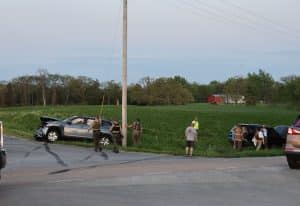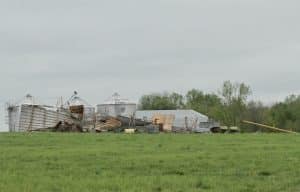Looking back on ‘Rumble in the Jungle’

The “Rumble in the Jungle” is among the most legendary sporting events of the 20th century, pitting boxing champions George Foreman and Muhammad Ali against each other in a match watched by an estimated one billion worldwide.
With the event’s 50th anniversary on Oct. 30, a Columbia man recently spoke with the Republic-Times to recall his experience witnessing the fight firsthand.
As he made clear, Mike Heller wasn’t in Zaire – now known as the Democratic Republic of the Congo – just to see the match.
Originally from Newburgh, Ind., Heller attended Indiana University and, after graduating, landed a job as an accountant for the now defunct civil engineering firm Morrison-Knudsen.
His big role with the company was to help with the accounting for Inga-Shaba, an African company so-named because its chief purpose was constructing a transmission line from the Inga province of Zaire to the copper mines of the country’s Shaba province.
“We were erecting the transmission lines for 1,200 miles,” Heller said. “Part of that was you had to clear a 100-yard pathway for the transmission lines through the jungle. In our account books, we kept track of… we had heavily wooded areas, jungle, hills, all that.”
Heller further noted that the project also involved building the infrastructure to support those transmission lines, constructing roads and bridges so the project could actually come to fruition.
He arrived in Zaire in August 1974. The fight was originally scheduled for the end of September, though it ultimately wound up being postponed for a month.
Having landed in Kinshasa, Heller said his work was primarily around the port city of Matadi, though he and several co-workers were able to pile into an F600 truck – one of many pieces of substantial equipment his company was working with regularly – to head back to Kinshasa for the fight.
With the “Rumble in the Jungle” set to take place early in the morning to broadcast in America during prime viewing time, Heller arrived the previous evening.
As a small anecdote, he recalled getting dinner with his co-workers and many other folks only to have his attention grabbed by a man who recognized his Indiana University shirt.
The two started a conversation, and it happened that this stranger was also originally from Newburgh.
“So about 7,000 miles away… that tells me the world’s a small place,” Heller said.
On the fight itself, Heller recalled the atmosphere before and during.
With around a billion people watching on TV, the stadium was packed with folks who had traveled to watch, though most seats were naturally filled by locals.
Foreman, professionally undefeated, was the favorite to win against Ali, though the latter had won the favor of folks in Zaire during his training in the country leading up to the match.
As Heller recalled and many remember, Ali ultimately prevailed with the rope-a-dope technique, leaning on the ring’s ropes while Foreman tired himself out round after round.
“Those first four rounds, that’s when he was doing the rope-a-dope and just leaning against the ropes, and Foreman was just pounding on him and pounding on him, but they weren’t really striking, they were all glancing blows,” Heller said. “He didn’t really get any good hits on Ali.
“By the fifth round, Ali started poking him pretty good,” Heller continued. “By the eighth round, he knocked him down.”
Heller, understandably, was quite happy to have been able to see such a historic match in person.
Having recently rewatched the match, Heller spoke about how he feels he’s really able to hone in on the progress of the fight and how both men, particularly Foreman, got worn down through each round given the heat and humidity.
He also spoke about the ropes of the ring, noting that the ropes in the preceding Ali vs. Joe Frazier fight seemed to be rather taut compared to those in the Rumble in the Jungle.
Heller also discussed much of the rest of his time in Zaire, from attending the wedding of his assistant Batia to an incident in which he and some coworkers went to check out some nearby caves, only to be met by a group of baboons as they left – they hastily made their way to their vehicles and decided to avoid any similar expeditions.
He also has a collection of art and other collectibles from his years there, including small elephants made of ebony, pictures made using butterfly wings and a rug consisting of antelope and other hides stitched together.
These treasures are scattered throughout Heller’s Columbia home, though he also holds the memory of that legendary boxing match as yet another souvenir.
“I felt like I couldn’t miss that,” Heller said.






